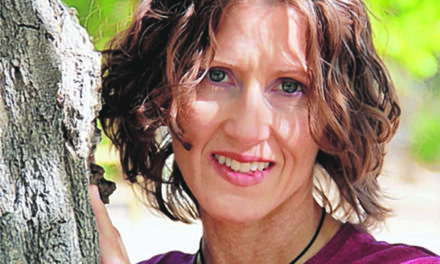
Anna Padilla
News-Bulletin Staff Writer
Last week I decided to create a poll on my Instagram to see what kinds of local coffee my friends were drinking.
Ever since I began drinking coffee, I only ever had it how I’d seen my parents drink it—with so much cream that was the only thing you could taste.
When I began college at UNM, I would often go to local coffee shops with friends to study or hang out. That’s when I was exposed to third wave coffee, which refers to the third cultural evolution of coffee accessibility.
To understand the third wave of coffee, I had to learn what the first and second waves were.
The first wave of coffee dates back to the 1800s, when companies such as Folgers or Maxwell House began providing accessible coffee to more people. The first wave of coffee centered around the novelty and convenience of homemade coffee.
In the early 1900s, instant coffee became popular because it didn’t require the roasting equipment to make it, and with the patent of vacuum sealed containers, it was perfect to send to World War I soldiers overseas.
Think of the second wave of coffee as “fast food coffee,” much like the coffee blends from McDonalds and Starbucks. In the late ’70s, Starbucks made popular the social experience of coffee by opening up coffee shops all across the country and making the model of the “trendy” coffee spot.
The third wave of coffee is the fairly modern movement to appreciate coffee as an artisan drink, much like how wine is held to a higher culinary standard. Think of the many locally-owned trendy coffee shops popping up around Albuquerque.
But why would people go out of their way to visit these kinds of coffee shops instead of something quick and easy?
First, the movement behind third wave coffee is being able to control the entire process of where the coffee is sourced from to how it’s brewed and served. This allows coffee roasters to be able to support ethical farming and ethical labor practices.
The professional farmers and scientists who grow the coffee beans should be paid fairly for their labor and efforts, no matter where in the world they are.
The major appeal of third wave coffee shops to people my age is a sense of community as opposed to “fast food coffee,” which is great for a quick trip in and out of the shop.
Local coffee shops that sell artisan coffee employ folks who are educated in the process, who truly love what they’re doing and want to share in that passion of not only coffee but building their community.
I enjoy walking into a coffee shop and seeing a familiar barista and ordering my usual, or if I’m feeling adventurous that day, seeing their face light up when I ask them what their favorite drink on the menu is and why.
I’m a big proponent for supporting local businesses, so it was a no-brainer for me to start visiting local shops.
It took me while to adjust to using less cream and sugar in my coffee, but the transition was worth it to fully appreciate the flavor of locally-roasted coffee.
Different coffee beans have different flavors, which was a shock to me because I thought all coffee tasted like coffee, but it’s not necessarily as simple as that. Coffee grown in one part of the world with a specific type of coffee bean can reap notes of fruit, citrus, nuttiness or even chocolate.
So right now, even though going inside a coffee shop and sitting with friends might not be possible in the way it used to be, supporting New Mexican coffee shops by purchasing their coffee to make at home still allows for that appreciation of the coffee.
Many third-wave coffee shops in Albuquerque sell their own blend of either powder or beans for you to make at home, either online or to pick up in the store.
If you’ve ever wanted to try something outside of your normal coffee and cream combo, now’s the perfect time to adventure outside of your routine to try something fun, all while supporting local businesses.















